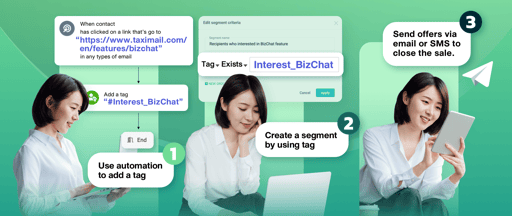Terms and Privacy •
Welcome to the world of B2B Email Marketing Strategy. As email marketers, we have the access to leads as they come to our sales funnel. They give us the ability to nurture the lead as well as the flow of information throughout the sales funnel.
As we all know, B2B or business-to-business concept defines the conversation involving an exchange of products and services information between two business entities.
It is imperative to understand the logic and reasoning behind the purchasing decision. You have the due diligence to for more in-depth email marketing initiatives. You must focus on your business such as time, money and resources. But the single most important factor is your “database” and how you can grow them.
Are you excited to learn more? If your database is a mess - there are ways to help you and organize and optimize to take your email marketing to the next level.
These strategies will help you grow your list exponentially.
Step 1: Determine the source
The first step in measuring your ROI is to establish the original-source field. The field should be set when every contact of your email marketing database
Even if your marketing automation software assigns the first-touch campaign to new contacts, it's important to have a separate field that notes where this contact originally came from before he or she converted to a lead via your website. You can then make a follow-up accordingly when you know all the information of the contact.
Step 2: Tracking Influence
When you have every contacts source field, the next step would be to track and capture the conversion information. Email Marketing Automation is a good platform to help manage the amount of data and complex dynamic markets. You’ll be able to qualify your contacts as “marketing- qualified” before you handle and move on with the sales process.
Step 3: Report Closed Deals
Your CRM system will play a great role in your B2B marketing strategy because they will help you monitor the Customers Lifetime Value in the buying environment. All the data should be used and how credits will be given for each sale.
There are 4 categories of closed opportunities:
- Marketing sourced and nurtured - this means that marketing created and nurtured the contact through value-added digital ways before handing to Sales.
- Marketing sourced and Sales nurtured - this means marketing created this contact but failed to engage with email, social and other trackable interactions before handing to Sales.
- Sales sourced and Marketing nurtured - marketing did not create this contact but was able to successfully engage the customer through social, email and other trackable interactions.
- Sales sourced and Sales nurtured - This contact did not interact to respond to any marketing activities.
Once you have a clear path of the closed opportunities, you can put together a contribution report with your conversion marketing influenced during this stage for your sales funnel.
Step 4: Explainer videos
Email marketers found that video is the one of the top 3 useful types of content for B2B buyers. The explainer video is a short film that tells a story about your brand and fills the potential customers with information. This is a unique value proposition.
Step 5: Native advertising
Most of the people do not know what native advert is all about. This is a material in an online publication that resembles the publication’s editorial and it is paid by the advertiser in order to promote the brand or the product.
Step 6: You treat every customer the same
You must remember that not all customers are the same. They have different needs and reasons why they purchase from you. It comes with different expectations, so it must have a different approach. There are different stages in the buying process and different customer behavior. You have to identify the pattern of the customers that are most valuable to your business.
The best way to keep track and control with your sales funnel is thorough and effective database management. There are lots of CRM applications that provides clear visibility if your sales funnel by tracking the prospects through each sales pipeline stage of your selling process.
This will bring you to the light of what works for you and what’s not on the way to winning the deal. Identifying where you lack in your sales funnel will let you prevent loss or low conversion.
Database management is very important to your business because they are a highly efficient method for handling multiple types of data.
Data such as employees record, student information, payroll, accounting, project management, inventory and so much more play a big role in your sales funnel.
If your database management is not set well, it will take more time for the task to finish. Data can be categorized and structured to suit your needs. You can have the control to focus on the other important stage of your sales funnel once you map out your data.
Marketing campaign changes often, but they must be changed based on the reported data, not on what the marketers think the target wants. Data helps tweak and adjust campaigns, constantly improving the strategy of your sales funnel.
You can set whatever rule you want, but after a certain number of “no,” “not now” or “not yet” answers, it might be time to move that lead out of your database, or at least down the priority list of your targets.
Five is a fairly common threshold. Set the bar too low and you might miss out. Set it too high and you might develop a bad reputation.
Without a sales funnel, your sales team is flying blind. Having sales funnel in place gives you the visibility and consistent process necessary to get the best results out of your data, and it helps you measure your progress at each stage of the sales process.
By following these steps, you can nurture a lead through the sales funnel to maximize your sales success. The idea is to turn a “not now” into a purchase, and therefore increase the number and size of your sales.










